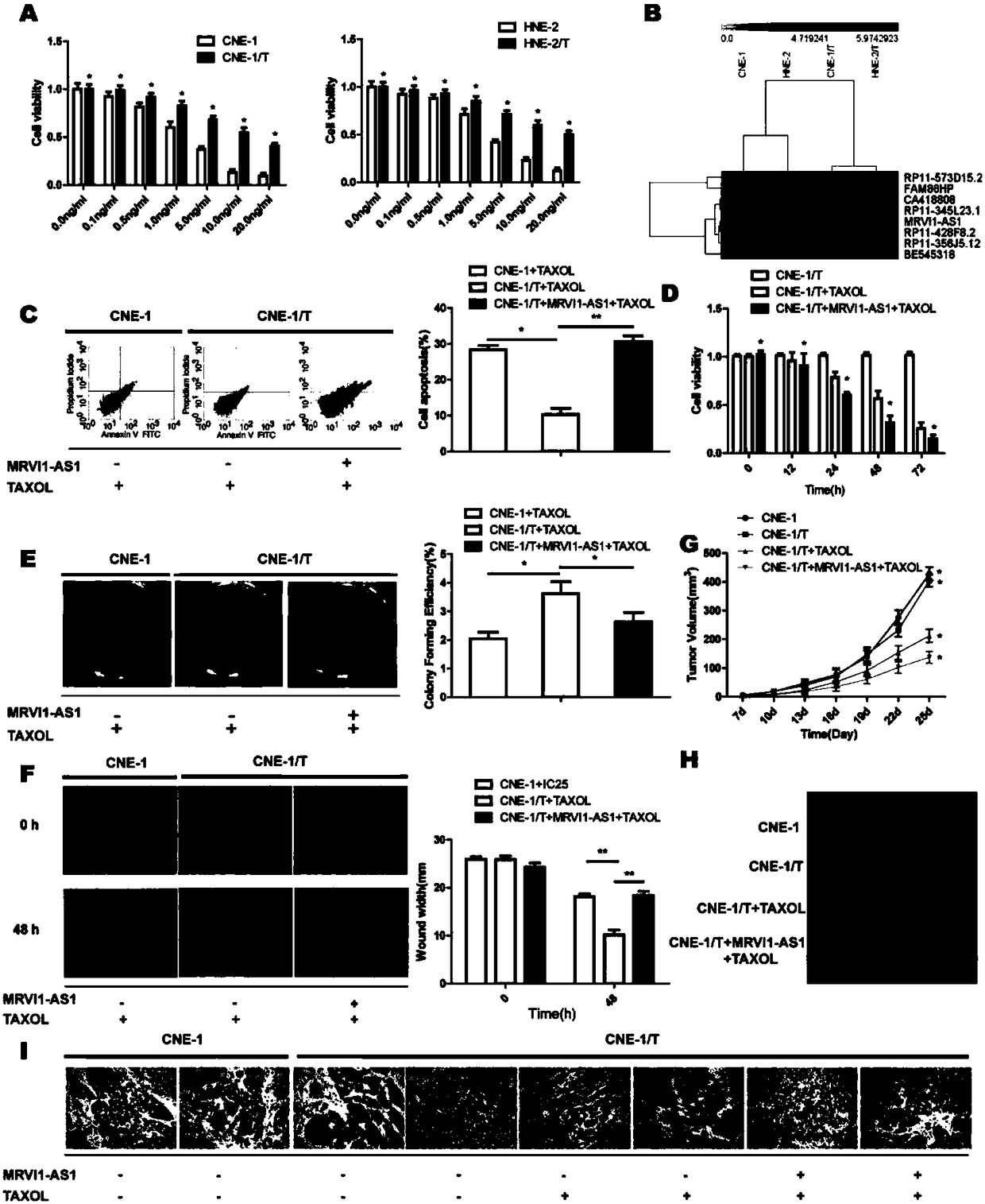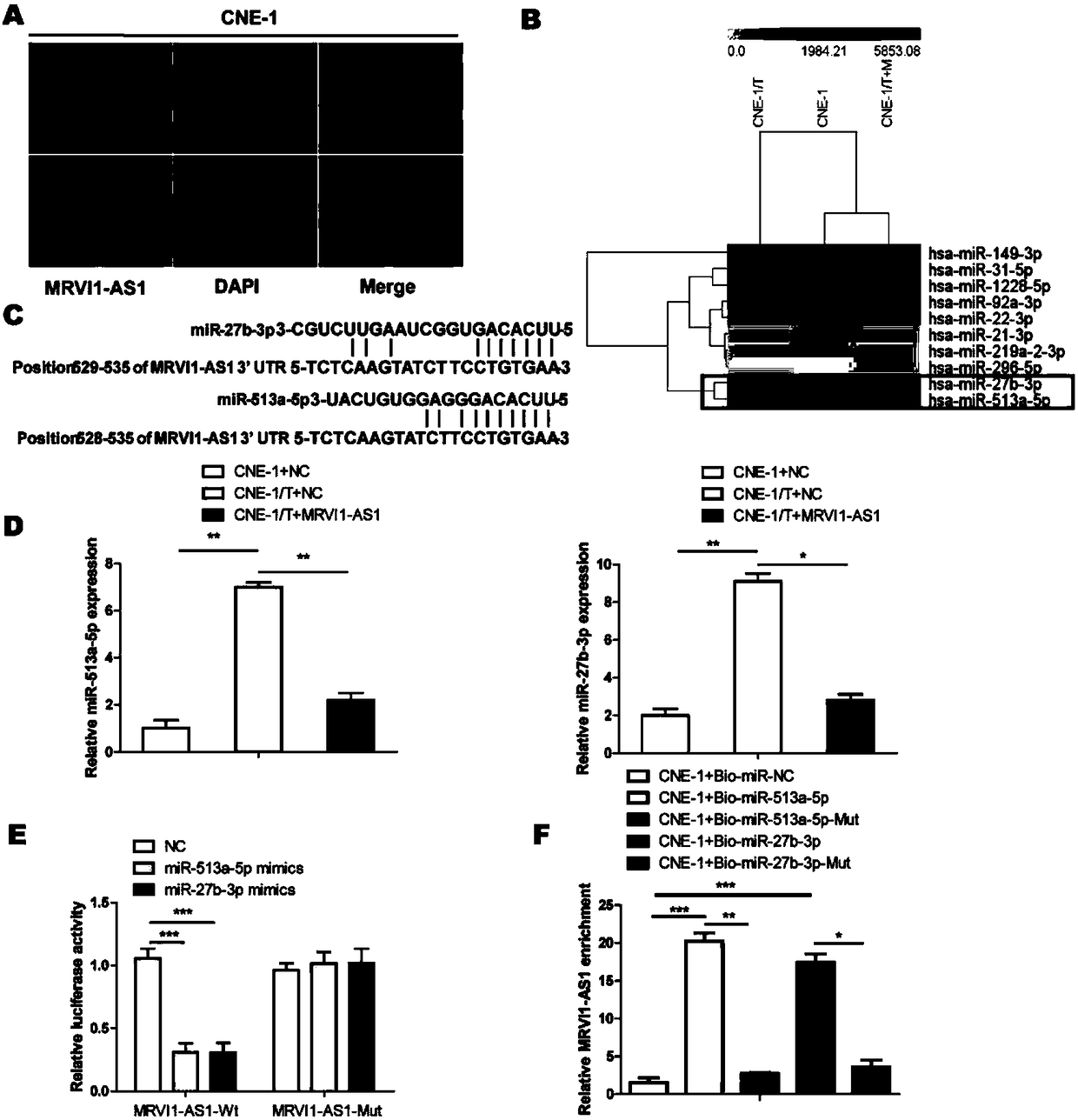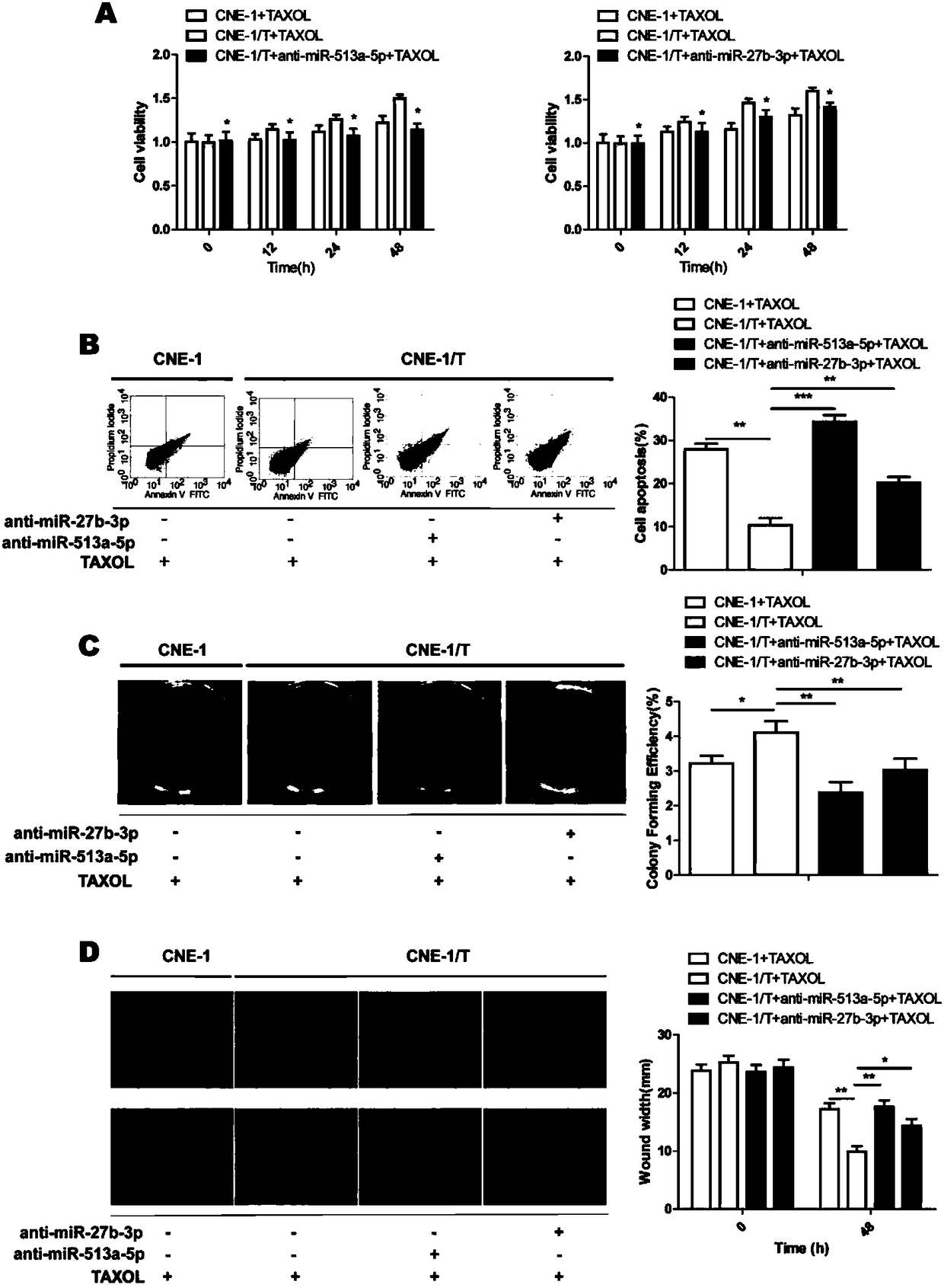Application of ATF3 as target site in preparing taxol chemosensitization medicine for treating nasopharynx cancer
A target site, paclitaxel technology, applied in the field of biomedicine, can solve the problems of paclitaxel chemosensitivity research is rare, the specific mechanism is not clear, etc.
- Summary
- Abstract
- Description
- Claims
- Application Information
AI Technical Summary
Problems solved by technology
Method used
Image
Examples
Embodiment 1
[0019]MRVI1-AS1 increases paclitaxel chemosensitivity in nasopharyngeal carcinoma in vivo and in vitro
[0020] We first performed MTT detection on CNE-1, CNE-1 / T, HNE-2, HNE-2 / T to confirm the paclitaxel resistance of tumor cells ( figure 1 A), and then perform lncRNA chip screening on the above four strains of cells. After screening, we found that the expression of MRVI1-AS1 in the two drug-resistant strains was significantly lower than that of the parental strain ( figure 1 B), MTT results showed that when MRVI1-AS1 was overexpressed in drug-resistant strains, the drug resistance of CNE-1 / T cells to paclitaxel was significantly reversed. Flow cytometry, colony formation and scratch experiments further proved that the overexpression of MRVI1-AS1 can increase the chemotherapy sensitivity of nasopharyngeal carcinoma paclitaxel ( figure 1 C-F). In order to further verify the function of MRVI1-AS1, we subcutaneously injected CNE-1, CNE-1 / T and CNE-1 / T overexpressing MRVI1-AS1 ...
Embodiment 2
[0022] MRVI1-AS1 can increase the chemosensitivity of paclitaxel in nasopharyngeal carcinoma by targeting miR-513a-5p and miR-27b-3p
[0023] In order to further explore the mechanism by which MRVI1-AS1 increases the chemosensitivity of nasopharyngeal carcinoma to paclitaxel, we first determined the intracellular location of MRVI1-AS1 and found that it was expressed in both the nucleus and the cytoplasm ( figure 2 A). Then we performed miRNA and mRNA microarray detection on the three samples of CNE-1, CNE-1 / T and CNE-1 / T+MRVI1-AS1 overexpression strains. In the miRNA microarray, we found that miR-27b-3p and miR- The expression of 513a-5p in the CNE-1 / T+MRVI1-AS1 overexpression strain was significantly lower than that in CNE-1 / T ( figure 2 B), and they also have a possible binding site at the 3'UTR end of MRVI1-AS1 ( figure 2 C). The expression levels of miR-27b-3p and miR-513a-5p were detected in CNE-1 cells and CNE-1 / T cells, and their expression levels in CNE-1 / T cells...
Embodiment 3
[0025] MRVI1-AS1 can increase the chemosensitivity of paclitaxel in nasopharyngeal carcinoma by restoring the expression of ATF3
[0026] In order to further study the downstream target genes of MRVI1-AS1, miR-27b-3p and miR-513a-5p, we analyzed the results of the mRNA chip and combined GEO, TCGA database and miRNA target prediction tool (microRNA.org and TargetScan) , it was found that the expression level of ATF3 after overexpression of MRVI1-AS1 in CNE-1 / T in the chip was significantly rebounded ( Figure 4 A); while the target prediction results show that ATF3 also has binding sites for miR-27b-3p and miR-513a-5p ( Figure 4 B); qRT-PCR results showed that the expression level of ATF3 was significantly increased after overexpressing MRVI1-AS1 in CNE-1 / T cells ( Figure 4 E), and after inhibiting the expression of miR-27b-3p or miR-513a-5p in CNE-1 / T cells, the expression level of ATF3 was also significantly increased ( Figure 4 F). This indicates that miR-513a-5p and m...
PUM
 Login to View More
Login to View More Abstract
Description
Claims
Application Information
 Login to View More
Login to View More - R&D
- Intellectual Property
- Life Sciences
- Materials
- Tech Scout
- Unparalleled Data Quality
- Higher Quality Content
- 60% Fewer Hallucinations
Browse by: Latest US Patents, China's latest patents, Technical Efficacy Thesaurus, Application Domain, Technology Topic, Popular Technical Reports.
© 2025 PatSnap. All rights reserved.Legal|Privacy policy|Modern Slavery Act Transparency Statement|Sitemap|About US| Contact US: help@patsnap.com



